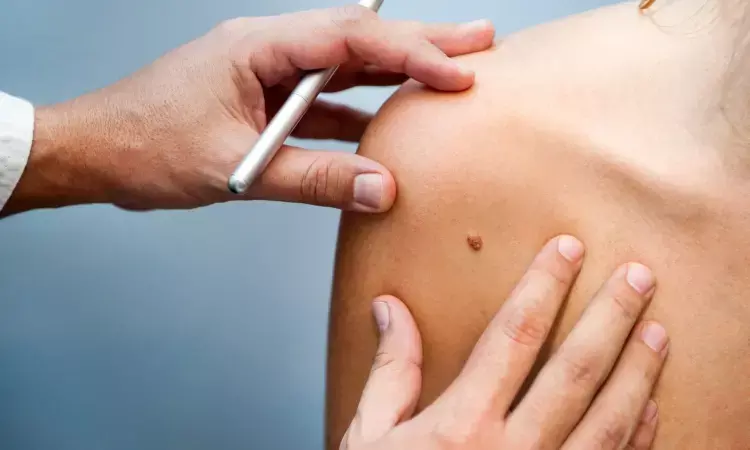- Home
- Medical news & Guidelines
- Anesthesiology
- Cardiology and CTVS
- Critical Care
- Dentistry
- Dermatology
- Diabetes and Endocrinology
- ENT
- Gastroenterology
- Medicine
- Nephrology
- Neurology
- Obstretics-Gynaecology
- Oncology
- Ophthalmology
- Orthopaedics
- Pediatrics-Neonatology
- Psychiatry
- Pulmonology
- Radiology
- Surgery
- Urology
- Laboratory Medicine
- Diet
- Nursing
- Paramedical
- Physiotherapy
- Health news
- Fact Check
- Bone Health Fact Check
- Brain Health Fact Check
- Cancer Related Fact Check
- Child Care Fact Check
- Dental and oral health fact check
- Diabetes and metabolic health fact check
- Diet and Nutrition Fact Check
- Eye and ENT Care Fact Check
- Fitness fact check
- Gut health fact check
- Heart health fact check
- Kidney health fact check
- Medical education fact check
- Men's health fact check
- Respiratory fact check
- Skin and hair care fact check
- Vaccine and Immunization fact check
- Women's health fact check
- AYUSH
- State News
- Andaman and Nicobar Islands
- Andhra Pradesh
- Arunachal Pradesh
- Assam
- Bihar
- Chandigarh
- Chattisgarh
- Dadra and Nagar Haveli
- Daman and Diu
- Delhi
- Goa
- Gujarat
- Haryana
- Himachal Pradesh
- Jammu & Kashmir
- Jharkhand
- Karnataka
- Kerala
- Ladakh
- Lakshadweep
- Madhya Pradesh
- Maharashtra
- Manipur
- Meghalaya
- Mizoram
- Nagaland
- Odisha
- Puducherry
- Punjab
- Rajasthan
- Sikkim
- Tamil Nadu
- Telangana
- Tripura
- Uttar Pradesh
- Uttrakhand
- West Bengal
- Medical Education
- Industry
Hydrogen peroxide 30 pc, helps to achieve skin clearance in seborrheic keratosis: Study

Manipal: 30% hydrogen peroxide (H2O2) can be utilized as a chemical cauterant in seborrheic keratoses (SKs) patients with minimal side effects, a recent study has found. The study, published in the International Journal of Dermatology, suggests that H2O2 30% can serve as a relatively inexpensive modality for SKs treatment.
Seborrheic keratosis is a common noncancerous (benign) skin condition. It becomes common in people as they get older. Seborrheic keratoses are usually black, brown, or light tan. The growths (lesions) look waxy or scaly and slightly raised. They appear gradually, usually on the neck, face, back, or chest. They are harmless and not contagious. They don't require treatment, however, if they become irritated by clothing or become bad in appearance it may be removed.
Hydrogen peroxide has been used as an antiseptic in medicine but at a higher concentration of 40%, it is used as a chemical cauterant for seborrheic keratoses. Therefore, at 30% its action and utility remain unexplored. Punya Suvarna and Manasa Narayan Kayarkatte from Manipal Academy of Higher Education (MAHE), Manipal, India, therefore aimed to investigate the efficacy and side effects of 30% H2O2 as a chemical cauterant in seborrheic keratoses.
For this purpose, the treatment of seborrheic keratoses was done at 30% H2O2 methodically. Following the treatment, the assessment was done for patient satisfaction, lesion thickness, and side effects like itching, burning, vesiculation, crusting, ulceration, erosion, and pigmentary changes.
Based on the study, the researchers reported the following:
- Complete clearance was observed in 49% of lesions, after a single session.
- 9% of lesions responded poorly. Patient satisfaction was excellent with 66.7% lesions.
- Side effects noted were burning, pruritus, erythema, edema, and crusting. However, none of them was severe. Dryness, vesiculation, and scarring were reported by none.
This led researchers to conclude, "H2O2 30% can be used as a chemical cauterant with minimal side effects."
Reference:
Suvarna P, Kayarkatte MN. Utility of 30% hydrogen peroxide in the treatment of seborrheic keratosis. Int J Dermatol. 2022 Sep;61(9):1113-1116. doi: 10.1111/ijd.16096. Epub 2022 Jan 30. PMID: 35094378.
Dr Kamal Kant Kohli-MBBS, DTCD- a chest specialist with more than 30 years of practice and a flair for writing clinical articles, Dr Kamal Kant Kohli joined Medical Dialogues as a Chief Editor of Medical News. Besides writing articles, as an editor, he proofreads and verifies all the medical content published on Medical Dialogues including those coming from journals, studies,medical conferences,guidelines etc. Email: drkohli@medicaldialogues.in. Contact no. 011-43720751


